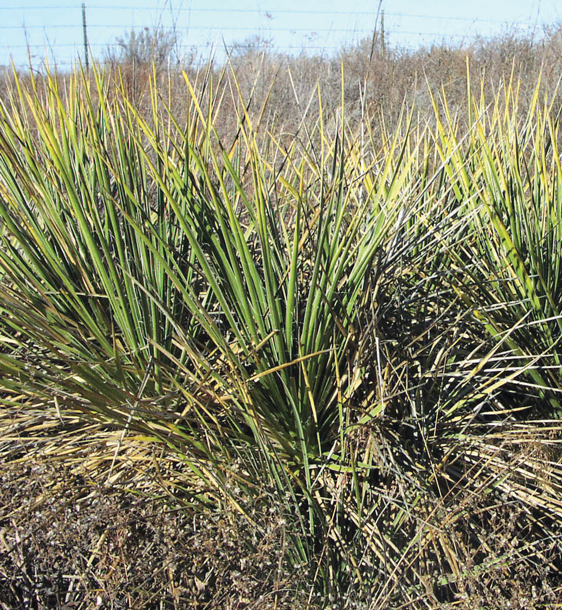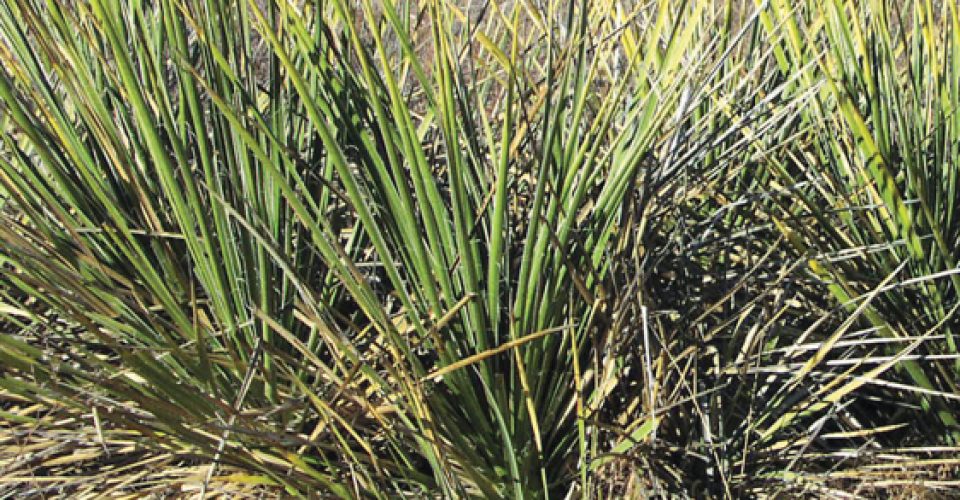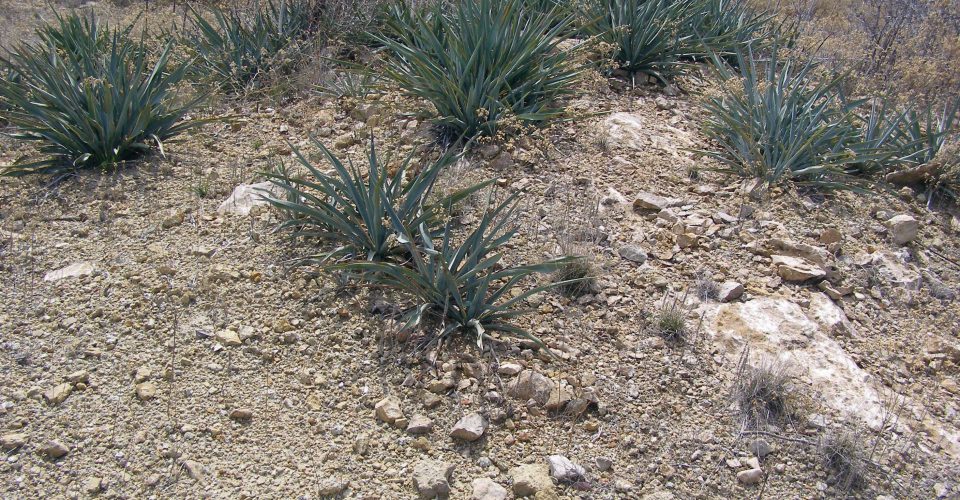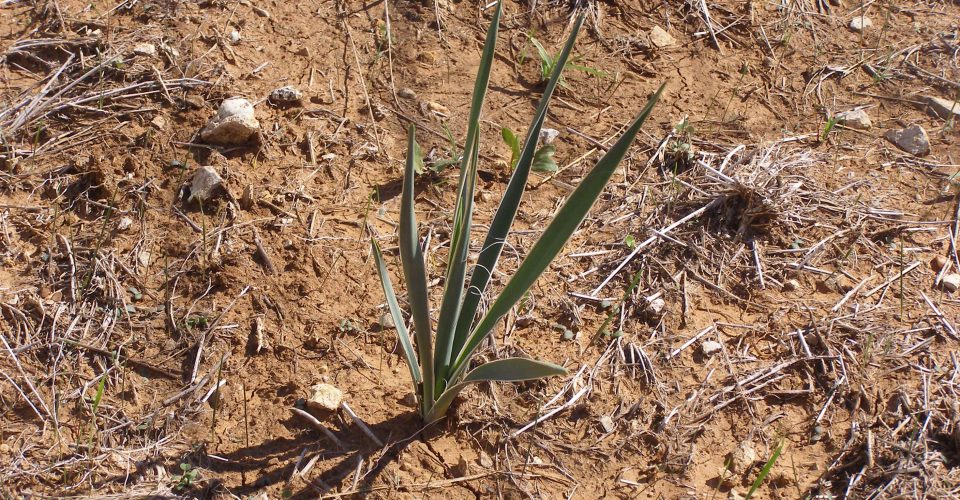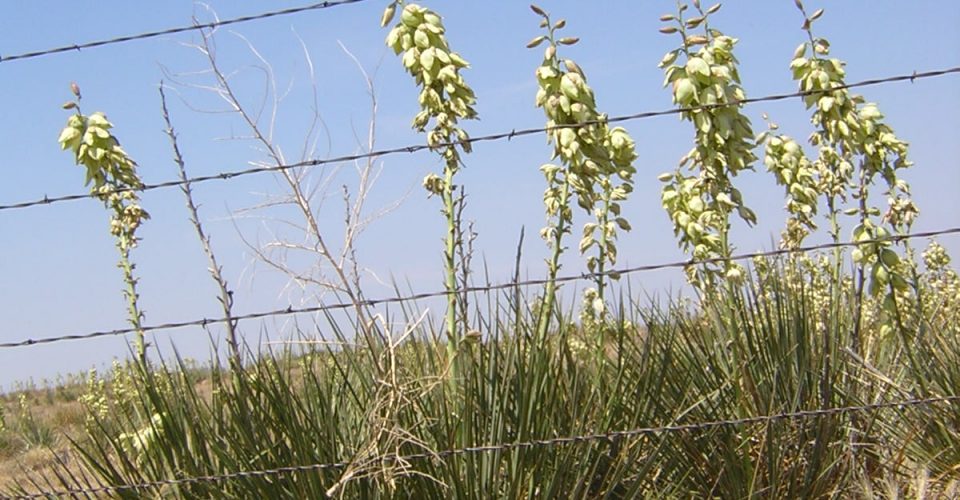Yucca (Yucca spp.)
The yucca is a common rangeland plant that can be found throughout the U.S., Mexico and Central America. Yucca is a large group of plants, consisting of more than 40 species.
Yucca plants can be found in many nurseries because they are a hybridized plant and make colorful additions to the urban landscape.
- Yuccas usually have a large clump of sharp edged, pointed leaves that can be up to 24 inches in length, vary in width, and be stiff or flaccid.
- Flowers are found on generally straight stalks that can reach a height of more than 8 feet, with short, upward spreading branches supporting cream-colored blossoms.
- Leaves are poor browse for most grazers, but livestock have been known to graze certain species during critical times when forage is limited.
- Yucca blooms are present in the spring and are very desirable forage for grazing animals. Cattle and white-tailed deer relish the blooms and flower stalks, which are often as high as 20 percent protein.
- Yucca is usually not a problem on rangelands, but in some areas can be a pest. It can hamper livestock grazing and forage accessibility.
Yucca can be kept in check by practicing good rangeland management. When it becomes a nuisance, it must be controlled with a timely application of herbicide.
Editor’s note: Kent Ferguson, retired rangeland management specialist from USDA Natural Resources Conservation Service (NRCS), is providing us with plant identification photo stories to help ranchers identify those forbs, forages and species growing in the pastures. Additional photos provided by USDA NRCS.
Yucca is excerpted from the November 2015 issue of The Cattleman magazine.

